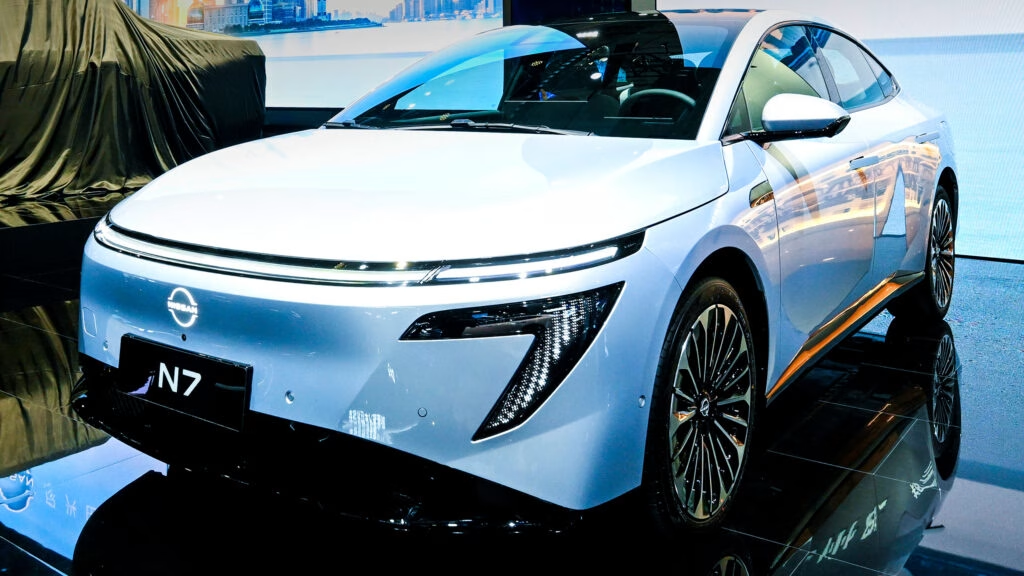The Dongfeng Nissan N7: A New Contender in the EV Market
Nissan’s latest offering, the Dongfeng Nissan N7 sedan, recently made its debut at the Shanghai Auto Show, just five months after its initial limited reveal. While the spotlight shone brightly on the Frontier Pro hybrid pickup, the N7 quietly showcased its potential as a sleek, electric vehicle option. But does it stand out in a crowded market? Let’s dive into what this new sedan has to offer.
What Makes the N7 Stand Out?
At first glance, the N7’s design is both smooth and aerodynamic, boasting a drag coefficient (Cd) of 0.208. This places it among the most aerodynamically efficient production cars today, second only to the Mercedes EQS. However, this focus on aerodynamics has led to a rather bland aesthetic. While some may appreciate its understated look, others might find it lacks the character that often draws buyers to electric vehicles.
Battery Options and Performance
When it comes to power, the N7 offers two battery options: a 58 kWh and a 73 kWh. Depending on the choice, drivers can expect power outputs ranging from 215 to 268 horsepower. While these figures are respectable, they may not excite those looking for cutting-edge performance. The absence of advanced features like 800-volt charging technology means the N7 sticks to a more traditional 400-volt system.
Nissan claims that the larger battery can deliver a range of up to 395 miles (635 km) on a single charge, but keep in mind that this figure is based on China’s CLTC protocol, which typically yields higher numbers than the EPA ratings used in the U.S. For potential buyers in China, this range might be appealing, but it raises questions about how the N7 would perform in other markets.
Inside the N7: Comfort Meets Technology
The interior of the N7 is designed to be both calming and functional. A standout feature is the large 15.6-inch tablet touchscreen, which dominates the dashboard alongside another display serving as the gauge cluster. While this modern setup may appeal to tech-savvy drivers, the lack of physical buttons could be a drawback for those who prefer tactile controls.
To enhance comfort, Nissan has introduced “zero pressure” seats equipped with an AI-based posture adjustment system, utilizing data from 49 sensors. These seats also come with a 12-point massage functionality—perfect for long drives. Additionally, a built-in fridge under the armrest can cool drinks to a chilly -6°C (21°F) or warm them up to 55°C (131°F), adding a touch of luxury to the driving experience.
Is the N7 Worth Considering?
While the N7 has its strengths, it also faces challenges. Its design may not resonate with everyone, and the powertrain specs, while adequate, don’t push the envelope in the electric vehicle space. Moreover, the N7 is built specifically for the Chinese market, which means it won’t be available in the U.S. anytime soon.
The big takeaway? The Nissan N7 isn’t about perfection—it’s about making smarter adjustments in a competitive landscape. If you’re in the market for an electric sedan, consider what features matter most to you. Whether it’s range, design, or tech-savvy interiors, the N7 offers a glimpse into Nissan’s vision for the future of electric vehicles. Start with one change this week, and you’ll likely spot the difference by month’s end.

